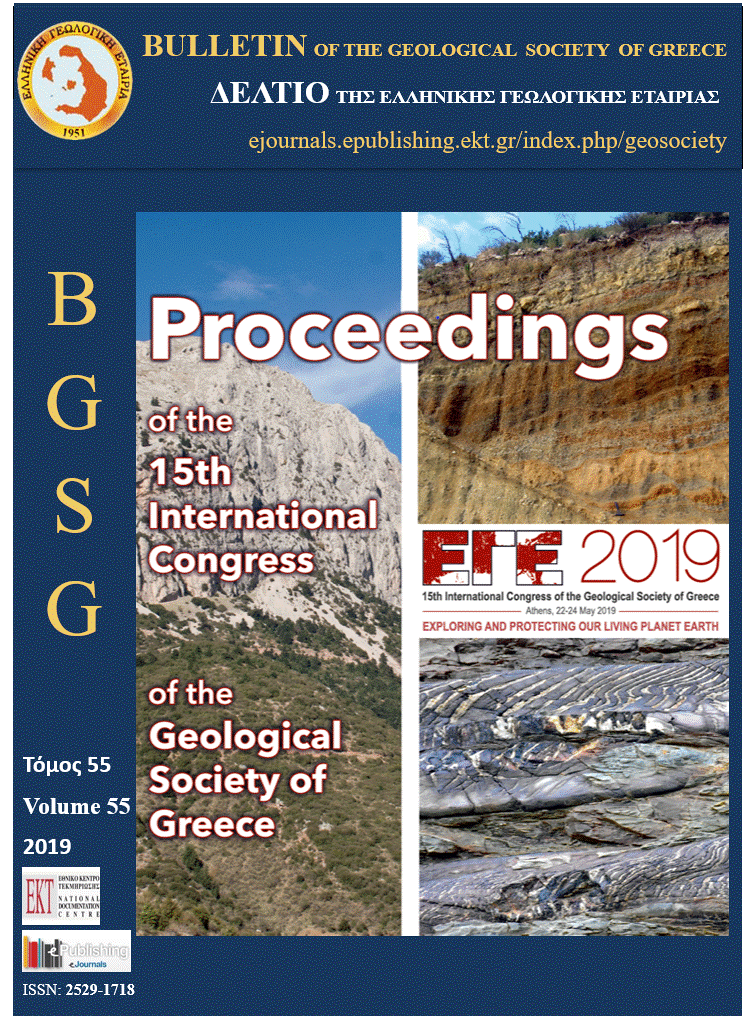Mineralogical, Petrological and Geochemical Study of the Agios Ioannis Volcanic Rocks, Kamena Vourla Area, Greece

Abstract
The Plio-Pleistocene volcanic center of Lichades is located in the Northern Euboean Gulf, at the western extremity of the North Anatolian Fault and it is one of the most neo-tectonically active areas in Greece. Volcanic rocks are exposed in the form of lava flows and/or domes mostly in the small islands (Lichades) offshore Kamena Vourla, as well as in a small outcrop in mainland, namely the Agios Ioannis area. Based on the results of the present study, the Agios Ioannis volcanic rocks are characterized as trachyandesites with high-K calc-alkaline affinities, similar to several volcanic rocks from the South Aegean Volcanic Arc. The petrological and mineral-chemical study reveal that the studied volcanic rocks are characterized by vitrophyric texture and a matrix dominated by glass, numerous randomly-oriented microlites of plagioclase and minor sanidine, clinopyroxene and amphibole. Phenocrysts comprise of plagioclase, olivine, quartz, clinopyroxene and amphibole. Plagioclase composition ranges from andesine to bytownite (An30-An73). Olivine cores are typically Mg-rich, and the rims display elevated FeO content. Clinopyroxenes display a narrow compositional range between augite and diopside, with the latter being more common. Amphiboles, are calcic and their composition ranges from tschermakite to tschermakitic hornblende. Mineralogical and geochemical similarities with other volcanic rocks in Greece such as Lesvos lamproites, may be helpful in understanding the genesis of the studied Agios Ioannis volcanics.
Article Details
- How to Cite
-
Kanellopoulos, C., Vougioukalakis, G., Mavrogonatos, C., Megremi, I., & Iliopoulos, I. (2019). Mineralogical, Petrological and Geochemical Study of the Agios Ioannis Volcanic Rocks, Kamena Vourla Area, Greece. Bulletin of the Geological Society of Greece, 55(1), 274–289. https://doi.org/10.12681/bgsg.21128
- Section
- Petrology and Mineralogy

This work is licensed under a Creative Commons Attribution-NonCommercial 4.0 International License.
Authors who publish with this journal agree to the following terms:
Authors retain copyright and grant the journal right of first publication with the work simultaneously licensed under a Creative Commons Attribution Non-Commercial License that allows others to share the work with an acknowledgement of the work's authorship and initial publication in this journal.
Authors are able to enter into separate, additional contractual arrangements for the non-exclusive distribution of the journal's published version of the work (e.g. post it to an institutional repository or publish it in a book), with an acknowledgement of its initial publication in this journal. Authors are permitted and encouraged to post their work online (preferably in institutional repositories or on their website) prior to and during the submission process, as it can lead to productive exchanges, as well as earlier and greater citation of published work.


